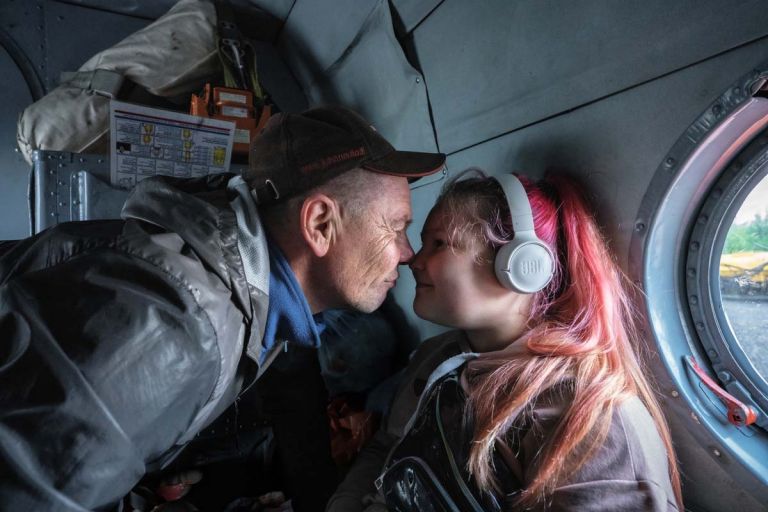Despite her colored hair and her smartphone in the pocket, an 11 years old little girl Uliana, shows some characteristic traits of her ethnic minoritiy in the Extreme North region of Russia, the Saami people. She loves being outdoors, going fishing, doing handicrafts and embroidery. These activities are for her the place where she formes the learning of an inherited memory from her nomadic ancestors. Through these children’s games is also transmitted an art of being resourceful.
Uliana comes from a long line of reindeer herders whose traditions almost disappeared due to sedentarization by the Soviets in the 1920s. Gathered in the main saami village – Lovozero, located in the hinterland of the city of Murmansk, was considered as a reserve. Other villages were also built on the saami lands to gather reindeer herders. Settled to work in kolkhozes, they no longer had the right to be Saamis: the practice of the language and the wearing of the traditional costume were prohibited.
Uliana lives nowadays with some 1,500 people in Lovozero, where wooden huts stand next to prefabricated concrete buildings. In her daily life, sometimes she takes a vacation at her grandmother’s in a tiny village with just 400 inhabitants. Or she visits an old woman who is the only one still living in a hamlet with four houses without electricity or running water. Still a little of the old world, though also a little of the new one too. And in it, a strong, hands-on, cheerful girl who can withstand freezing cold as well as swarms of mosquitoes.
Little by little, this living environment, this deep link with nature, will join Uliana’s interior landscapes. The 11-year-old girl is thus called to become a memory for her people. A memory that can be reborn at any time, like these engraved pictograms that Uliana makes reappear by throwing a little water on a stone. A memory that looks to the future, refreshed by the hands of a child.











